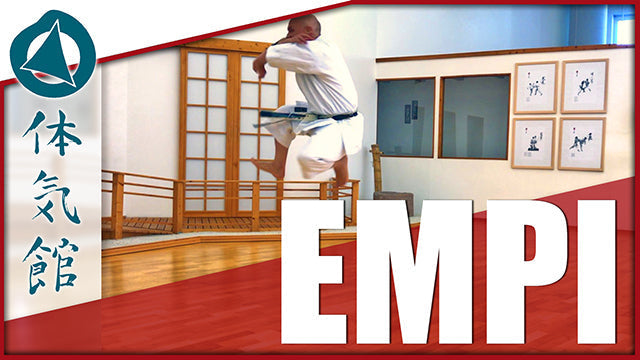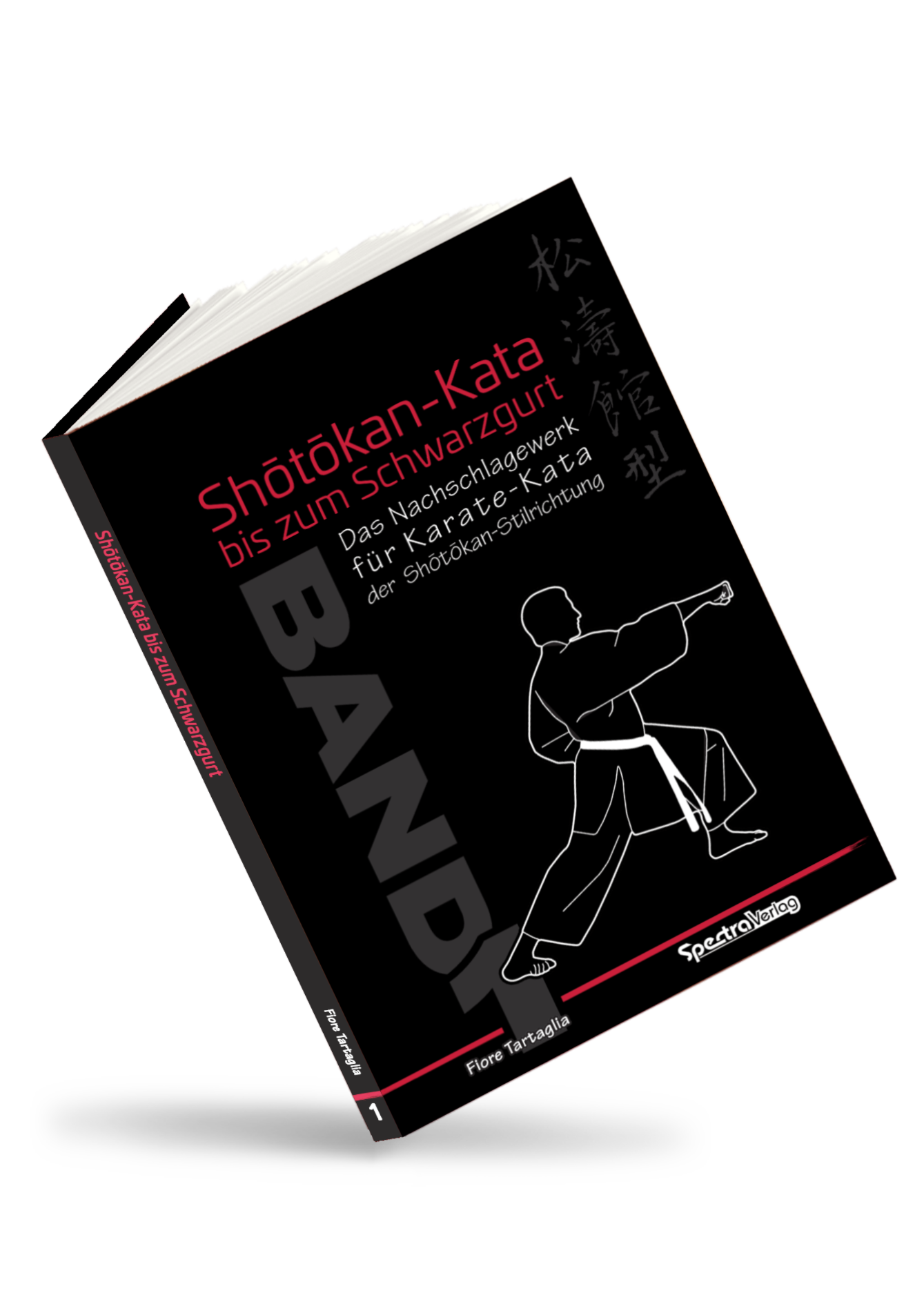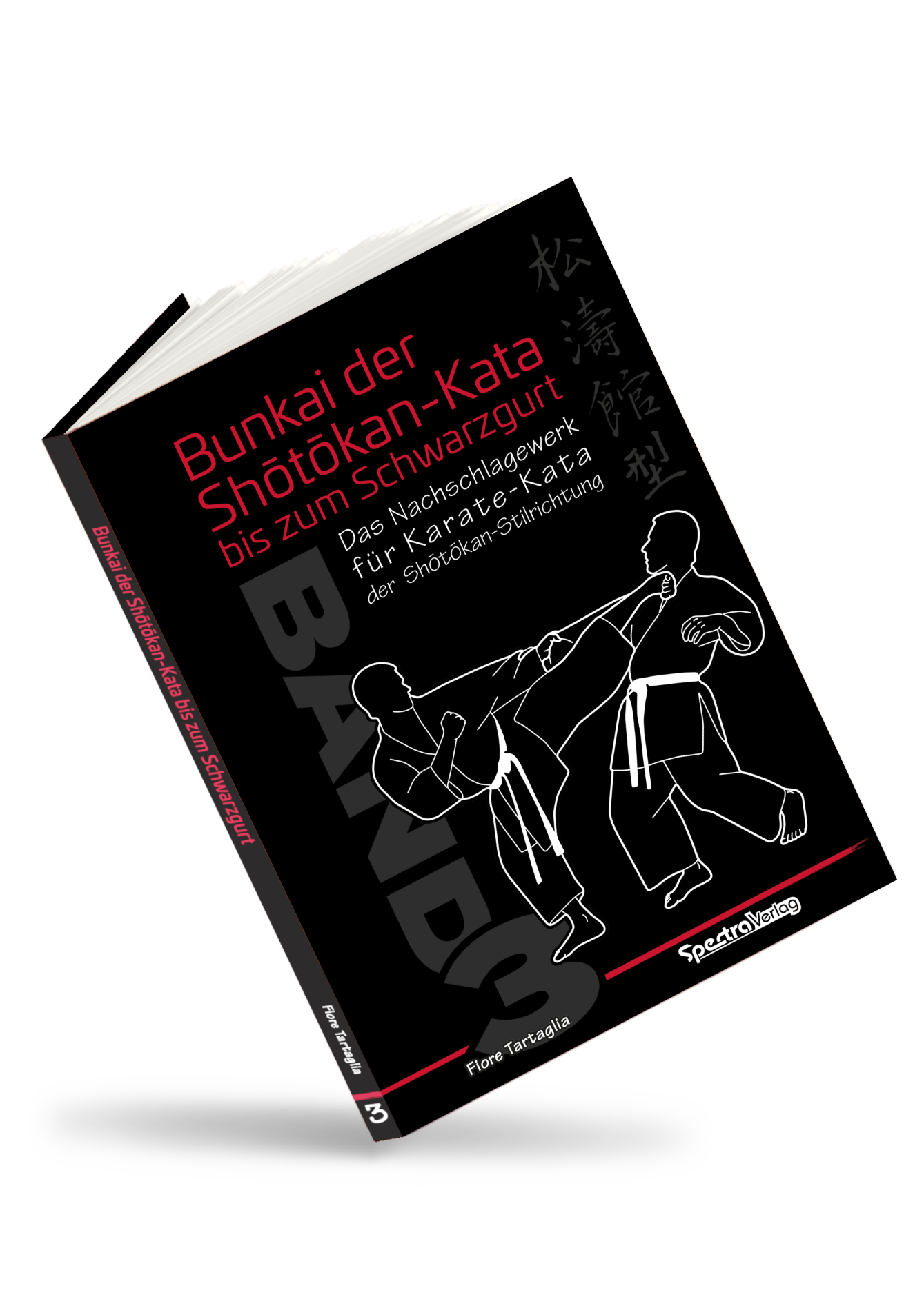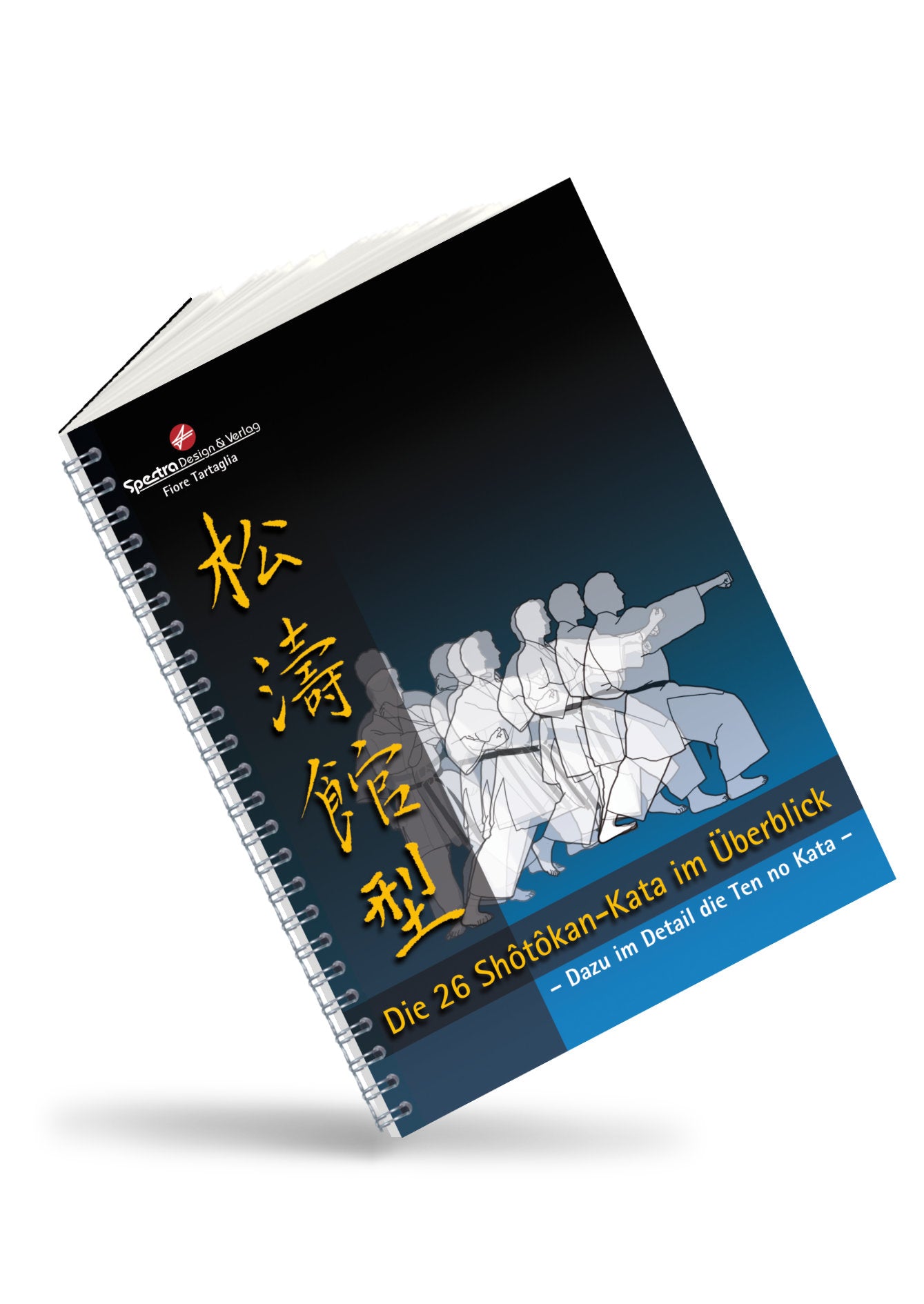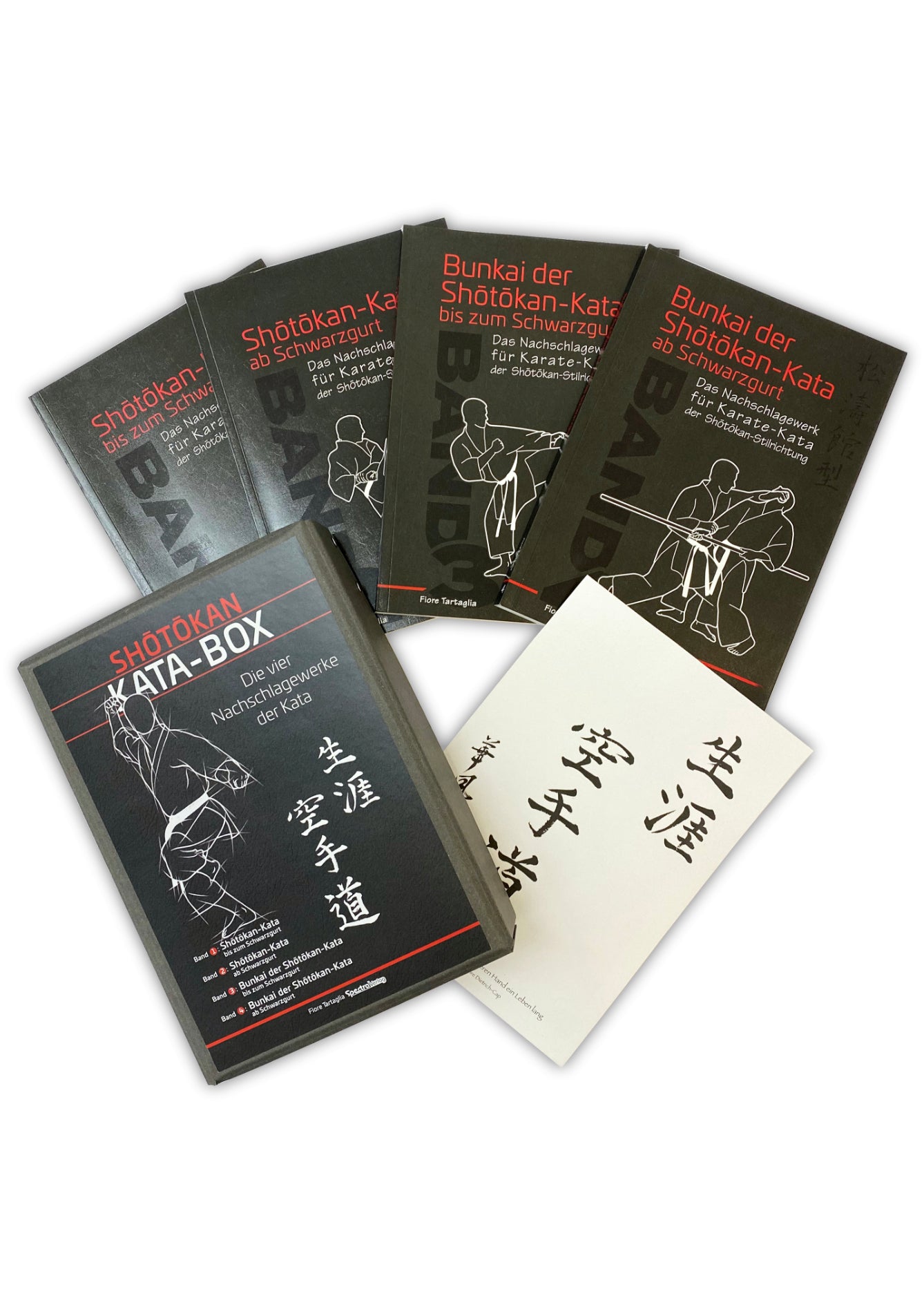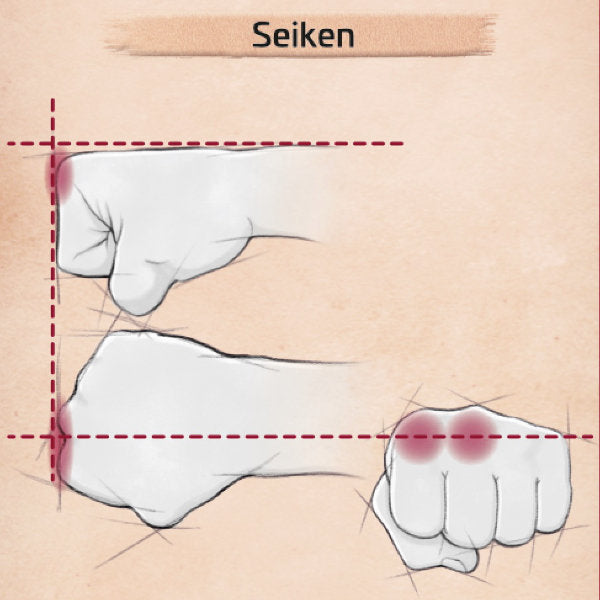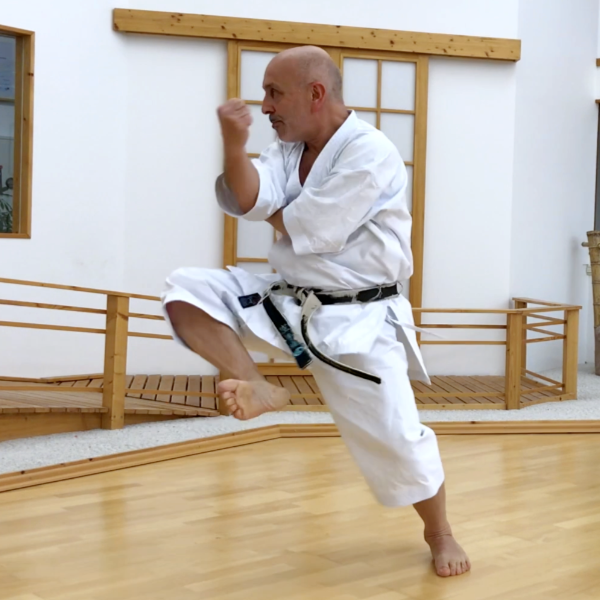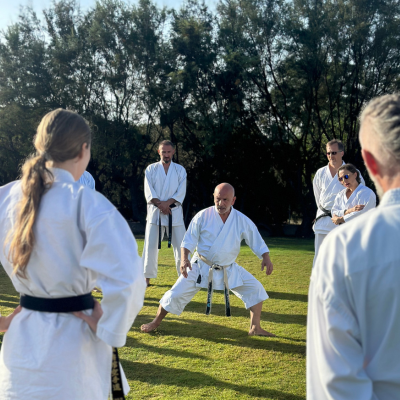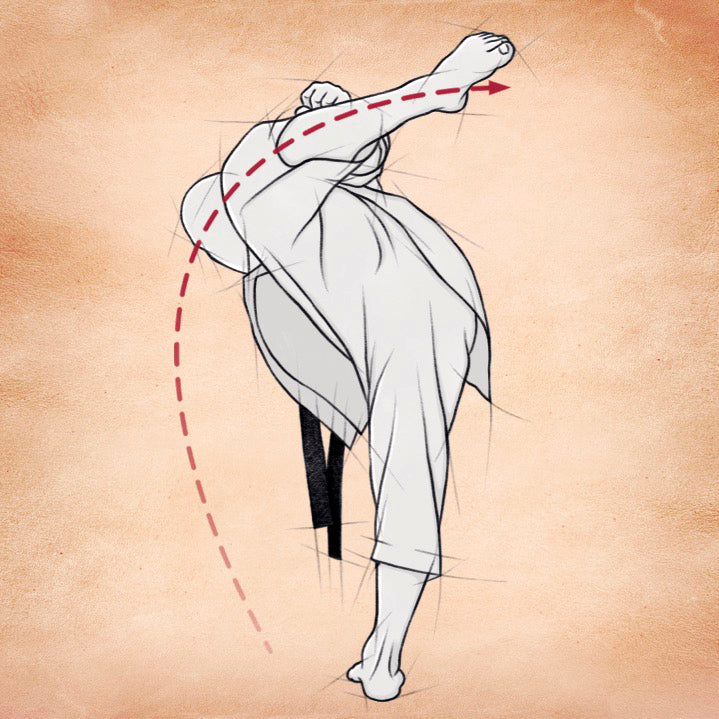HANGETSU – CRESCENT.
The original name of Hangetsu is Seishan, and this is still the name given to the kata in Wadō-ryū today. In Shōrin-ryū, Shitō-ryū, and Gōjū-ryū, it is called Seisan.
Its name comes from Hangetsu dachi, the stance most frequently used in this kata. Hangetsu incorporates slow and fast techniques. Some of the slow movements are combined with very pronounced breathing, which makes this kata so unique in the Shōtōkan style. This breathing technique is strongly reminiscent of the Gōjū-ryū kata. It is applied to the first six techniques as follows: during the backswing of the defensive technique, one inhales, and during the execution of the technique, one exhales. The pelvis is tilted upwards. The muscles of the entire body are strongly tensed. In the standing position, the pelvis is tilted the other way (the abdominal muscles are stretched upwards), it is a quick and short movement. During the counter technique, one exhales again with strong muscular tension. Exhaling is more like forcing the air in the lungs out.
In the series at the end of the first round, you attack with Morote ippon ken and then defend against Jōdan and Chūdan attacks. Counterattacks here are also left to the karateka. They can be derived from the techniques performed or added as additional techniques in Bunkai.
The following series represents defensive techniques, where the upper hand grabs the opponent to hold him, while the other hand has the opportunity to counter (not performed in the kata).
In the last kiai, zenkutsu dachi is used instead of hangetsu dachi.
After the kiai, a suri ashi follows, slightly diagonally backward, to return exactly to the beginning of the kata. Alternatively, the final technique can also be performed without suri ashi at this point.
Duration: approximately 90 seconds
